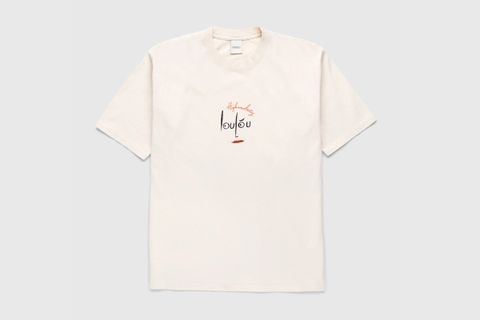How Oakley Polarized the World of Fashion
Now might be the moment to talk about Oakley sunglasses — again.
The California label that was once reserved exclusively for professional athletes and bum bag-wearing dads, that then became a staple for teens in the 1990s (JNCO jeans, frosted tips, chokers, and wraparound Oakleys were an essential), is having a renaissance.
We’ve discussed their appearance in high fashion and the curious case of the Oakley watch. Right now, the label is having another moment and a bizarrely persistent one.
Oakley, once a revolutionary eyewear label that catered exclusively to the world of extreme sports, has since become a ubiquitous staple in everyday fashion.
Like any modern brand with an archive as extensive as Oakley, the hype around the eyewear aficionados began to reappear in 2022 following a slew of reissues from its initial nineties heyday, most notably the SubZero revamp thirty years after its release.
Ask any Oakley head and they’ll tell you that the SubZero was the style that cemented the brand’s reputation as an eyewear leader. With its innovative Prizm Lens Technology and never-seen-before shield lens design, Oakley became the brand of the moment (within eyewear, anyway) and was being worn by some of the world’s most famous athletes.
That being the case, the fact the SubZero’s re-release kick-started Oakley’s recent revival shouldn’t come as too much of a surprise, especially considering the then-burgeoning Y2K trend and the rise of gaudy-looking performance wear.
Still, the idea of wearing flashy mirrored sunglasses has surprising elasticity. Oakleys are no longer relegated to the cherry on top of a technical trek cake, instead allowing even unsporting wearers to give the impression that they can tie a Yosemite bowline or that they own a pair of cargo shorts. It’s the real-world, fashion-as-function appeal.
The reissues are only part of the Oakley success story: collaborations are the other piece of the puzzle.
As everyone is now well-aware: collaborative releases are now commonplace in fashion. But good collaborative releases? Now they’re a little harder to come by.
What was once hailed as the unification of two (or more) creative minds coming together to create one or more products that wouldn’t have happened otherwise, has now become more of a logo-placing exercise between two labels. That’s not the case for Oakley, though.
Oakley’s big team-ups include with Palace, Satisfy, Bodega, and an ongoing Brain Dead partnership, some of today’s most in-demand brands have had their way with epochal Oakley styles.
It’s safe to say that Oakley has its stems in a myriad of subcultural eyewear pies, and to great acclaim. Perhaps the only perplexing thing about Oakley’s collaborative approach is its sheer persistence in terms of volume, although that’s not for you or I to worry about.
Collaborations with Satisfy and Foot Patrol have yielded Big O co-branded apparel, while its Factory Team sub-line (an avant-garde boundary-pushing branch of Oakley) has been dropping footwear with brands like Brain Dead for some time now.
Take its Dead Flesh and Chop Saw silhouettes, for example, two styles conceptualized as Oakley Factory Team by Brain Dead.
Oakley’s process for reviving archival eyewear, apparel, and footwear has remained much the same through each of its projects of late: celebrating archival Oakley styles, the trailblazing designs, and the pioneering storytelling behind it.
Thanks to Oakley's honest collaborative approach, an extensive archive, some of the best eyewear in the game, and international ambassadors like Kylian Mbappe and Alexia Puttelas, Oakley’s return has been an explosive success. The world of fashion is finally now looking through Oakley’s lens.


